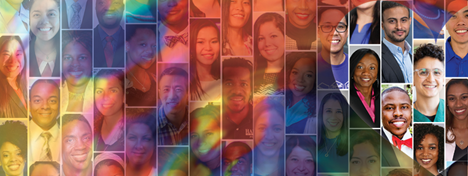By Casey Kim, Special Education Teacher, UIUC Doctoral student and LEND Trainee
Korean society has long held a deep respect for the pursuit of education, serving as a cornerstone of its reputation as an educational powerhouse. However, when it comes to special education, opinions in Korea are divided. In a culture where societal judgment (Si-sun in Korean) is significant, having a child with disabilities was once viewed as a familial 'shame.' This mindset is changing, with parents now investing heavily in supporting their children with disabilities. For instance, ABA therapy, which is not covered by medical insurance in Korea, can cost parents $80-$100 per 40-minute session, in addition to the expenses for speech therapy, occupational therapy, and physical therapy.
Many Korean parents are now turning their radar towards America, desperately seeking a new dream: high-quality, affordable special education for their children with disabilities.
The Move to America
The migration of Korean families to America, particularly those with children with disabilities, is a story of resilience and hope. They seek a more inclusive and supportive educational system, starkly contrasting what many find in their home country.
Challenges Faced by Korean Immigrant Parents
Despite the advantages of the U.S. system, Korean immigrant parents encounter numerous barriers, including language differences, cultural disparities, and a lack of sufficient information, leading to frustration and a sense of marginalization. A study focusing on Korean mothers raising children with disabilities in the U.S. emphasized their resilience and the need for cultural sensitivity in providing support (Lee et al., 2023).
The Way Forward
Bridging the gap between Korean immigrant families and the U.S. special education system requires several measures. Qualified interpreter services and systemic, sustained support are crucial, as is a deep understanding of cultural differences by educators and professionals.
Conclusion
The journey of Korean families to America in search of better educational opportunities for their children with disabilities demonstrates their dedication and the universal desire for inclusive, high-quality education. Addressing the challenges these families face is a step towards a more equitable and supportive educational environment for all.
For more stories of immigrant families, read here:
Cummings, K. P., & Hardin, B. J. (2017). Navigating disability and related services: Stories of immigrant families. Early Child Development and Care, 187(1), 115-127.
Kim, J. (2013). Unheard Voices: Korean Immigrant Mothers' Experiences with the United States Special Education System. ProQuest LLC.
Kim, J., & Kim, S. (2017). Positioning of Korean immigrant mothers of children with disabilities. International Journal of Multicultural Education, 19(3), 41-64.
Lee, J., Kim, C., Yoon, C., & Chung, M. (2023). Exploring culture and challenging behaviors: Voices from Korean caregivers of young children with autism. Education and Treatment of Children.
Yan, M. C., Kim, S., Kang, H. J., & Wilkerson, K. L. (2017). Perceptions of disability and special education among East Asian parents: US immigrants and non-immigrants. Journal of International Special Needs Education, 20(1), 41-55.



















